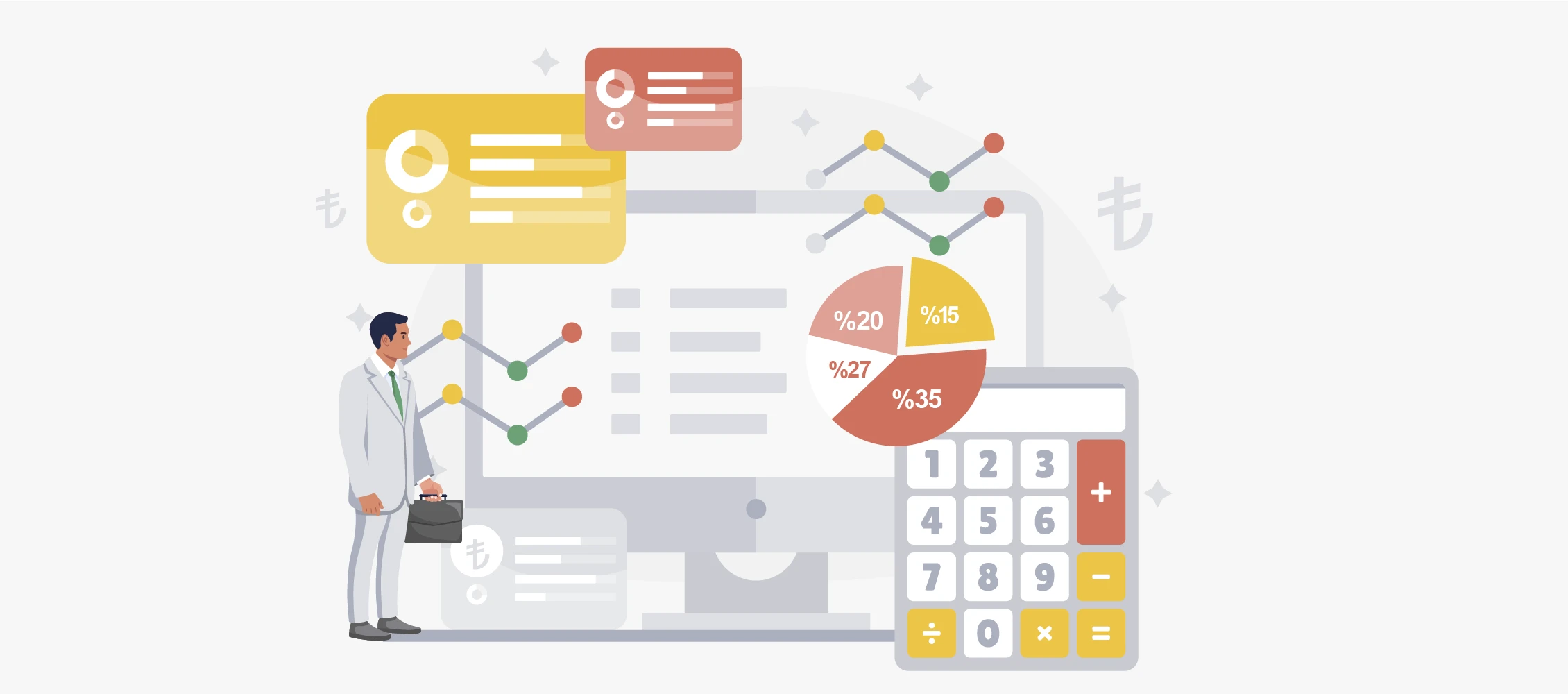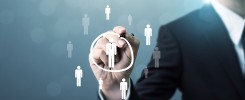03 October 2023
Understanding Work Accidents: Definition and Examples

Workplace accidents can occur in any profession or industry, putting the health and safety of employees at risk. These incidents can range from minor injuries to severe disabilities or even fatalities. To create a safer work environment, it is important to understand what constitutes a workplace accident and take preventive measures.
What is a Workplace Accident?
A workplace accident is an unexpected event that results in physical or mental harm, such as injuries, illnesses, and even fatalities while performing work-related activities. This can happen on the premises of the workplace or outside of it.
What are the Main Reasons Leading to Workplace Accidents?
Workplace accidents can happen for a variety of reasons, such as negligence, inadequate implementation of safety measures, human error, equipment malfunction, or hazardous working conditions. Recognizing that workplace accidents can occur in any industry or work environment, including offices, factories, construction sites, transportation, healthcare facilities, and other places where people work is crucial. Some factors that can contribute to workplace accidents include:
Lack of Training
Insufficient training greatly contributes to workplace accidents. Employees not well-versed in safety protocols, handling equipment, or hazardous substances may inadvertently jeopardize their and others' safety. To prevent this, organizations must offer thorough training programs to their staff on potential hazards, safe practices, and emergency procedures.
Inadequate Safety Equipment
One of the main reasons for workplace accidents is the failure to provide the necessary safety equipment and gear. Employees working in sectors like construction, manufacturing, or healthcare must have suitable personal protective equipment to reduce the risk of potential hazards. This equipment comprises helmets, gloves, protective eyewear, ear protectors, and specialized gear for specific tasks.
Insufficient Maintenance and Unsafe Infrastructure
Neglecting the maintenance of machinery, equipment, and infrastructure can pose a serious threat to employee safety. Faulty equipment, wiring, slippery floors, and poorly maintained walkways increase the risk of accidents. Regular inspections, maintenance programs, and timely repairs are necessary for maintaining a safe working environment.
Fatigue and Stress
Fatigue and excessive stress can affect an employee’s focus, reaction time, and decision-making abilities, leading to accidents. Long working hours, insufficient breaks, and high-pressure work environments increase levels of fatigue and stress. Implementing policies that prioritize work-life balance, encourage breaks, and support stress management techniques can significantly reduce the risk of accidents.
Lack of Communication and Coordination
Poor communication and coordination between employees and different departments can result in accidents. Miscommunication about safety procedures, work processes, or sudden changes can cause misunderstandings and hazardous situations. To enhance safety awareness and prevent accidents, it is crucial to establish transparent communication channels, hold frequent safety meetings, and encourage an open dialogue culture.
Human Error
Despite having stringent safety protocols, workplace accidents still occur due to human error. Mistakes in judgment and distractions can result in serious consequences. Promoting a culture of accountability, providing necessary training, and implementing error-prevention techniques can minimize the occurrence of human errors.
Hazardous Substances and Equipment
When dealing with hazardous substances like chemicals, gases, or radioactive materials, the risks involved are inherent. If proper handling, storage, and disposal protocols are not followed, it can result in chemical spills, toxic exposures, or fires. Employers must educate their employees on the potential dangers, provide adequate safety measures, and ensure that regulatory standards are met.
What Qualifies as Workplace Accidents?
The Social Insurance and General Health Insurance Law No. 5510 (In Turkish) in Türkiye defines workplace accidents to safeguard the safety and social security rights of employees. As per the law, workplace accidents refer to any unwanted incidents that happen under particular circumstances and are related to a person's work or workplace. The following situations are categorized as workplace accidents under the law:

- When the insured person is present at their workplace,
- When the work is being carried out by the employer,
- During the times when an insured person, who has an employment contract, is sent to a place other than their workplace by the employer and is not performing their primary job during that time,
- During the times when an insured, breastfeeding woman who has an employment contract, is given time according to labor regulations to breastfeed her child,
- During the commute to and from the place of work using a vehicle provided by the employer,
- If the insured person is self-employed and working independently, for events related to the work they are conducting.
Who is Eligible for Occupational Accident Insurance?
As per the regulations of Law No. 5510 concerning Social Insurance and General Health Insurance, the following individuals are covered by occupational accident insurance:
- Employees who have an employment contract (4/a)
- Self-employed individuals, village and neighborhood heads (4/b)
- Employees working in Penal Institutions and Detention Centers
- Apprentice candidates, apprentices, and interns
- Disabled veterans and recipients of Disability Pension under the scope of the first paragraph of Article 4 (a) and (b) of the Law
- Participants in Turkish Employment Agency training programs
- Turkish employees sent to work abroad by employers undertaking work in countries without a social security agreement
- Intern students
- Insured individuals working temporarily under an employment contract in agricultural and forestry jobs
- Insured individuals working in domestic services under the conditions specified in Article 9 Exhibit.
What to Do After a Workplace Accident?
In the event of a workplace accident, both employers and employees must take specific steps. Here are the necessary actions to be taken after a workplace accident:
- Emergency response teams or trained personnel should administer first aid; if unavailable, the injured employee must be taken to a healthcare facility.
- An accident report (record) must be created, which should include statements and signatures of any witnesses.
- Authorities, such as the Police or Gendarmerie, must be notified of the accident if it occurred within their jurisdiction.
- The accident must be reported to the relevant social security institution within 3 (three) business days from the date of the accident.

How to Prepare a Workplace Accident Report?
A workplace accident report is an official document that employers are required to maintain following workplace accidents. This document is essential in case legal proceedings arise due to the accident, as it serves as evidence. To create an accurate workplace accident report, the following essential elements should be included:
- Identification of the Injured Party:: The report should contain comprehensive information about the injured employee, such as their department, job responsibilities within the department, and date of employment.
- Description of the Incident:: The report should start with a description of the incident. The description should include the date, time, location, the specific area of the workplace where the accident occurred, and a summary of what happened.
- Details of the Accident:: The report should provide details about how the accident occurred, whether medical intervention was required, and a list of the tools and equipment involved. The report should also include information about the condition of the environment where the accident took place, lighting conditions, working conditions, and any other significant factors.
- Injured or Affected Parties:: In case any other individuals were harmed or affected by the workplace incident, it is important to mention their names, job titles, start dates, and the severity of their injuries. If there was any loss of limbs or appendages, it should also be specified. Furthermore, if needed, please provide details about the first aid that was given and any precautions that were taken.
- Witness Statements:: When filling out a workplace accident report, it's important to include the names, job titles, and contact information of anyone who witnessed the incident. It's also beneficial to gather statements from these witnesses to gain a better understanding of how the accident occurred. These statements can be significant evidence during the investigation process.
How to Report a Workplace Accident?
If there is an accident in the workplace, it is important to inform the Social Security Institution (SGK) (In Turkish) by either writing a letter or submitting an electronic notification. However, electronic notifications are only possible for those who are covered under 4A insurance, which includes employees working under an employer. If you are eligible, you can submit an electronic notification through the e-Devlet portal by using the user code and e-declaration password provided by the Social Security Institution. Simply fill out the workplace accident form (In Turkish) in the system and the process will be complete. If you do not have an e-declaration password or are not covered by 4A insurance, such as foreign employees, you will need to fill out the necessary forms and submit them directly to the Social Security Institution.
The Period for Reporting a Workplace Accident
If a workplace accident occurs, it must be reported to the Social Security Institution (SSI) within 3 business days. This 3-day period is calculated from the day after the accident. For example, if an accident happens on Monday, the report must be submitted by Thursday at midnight.
When calculating this period, it is important to note that Sundays and official holidays are not included. Additionally, according to the Labor Law, Saturdays are considered business days for employees but not for official procedures. Since reporting a workplace accident is an official procedure, Saturdays are not counted. For instance, if an accident occurs on a Friday, the report must be submitted by Wednesday at the latest.
The Penalty for Not Reporting a Workplace Accident
The consequences of not reporting a workplace accident differ depending on the number of employees present and the hazard class of the workplace. As per the Occupational Health and Safety Law No. 6331, the penalties for neglecting to report a workplace accident in 2026 are outlined below:
| Hazard Class | Workplaces with Less Than 10 Employees | Workplaces with 10-49 Employees | Workplaces with 50 or More Employees |
|---|---|---|---|
| Low Hazard | 44,443.00 TRY | 44,443.00 TRY | 66,664.00 TRY |
| Medium Hazard | 55,553.00 TRY | 66,664.00 TRY | 88,886.00 TRY |
| High Hazard | 66,664.00 TRY | 88,886.00 TRY | 133,329.00 TRY |
What are the Rights of an Employee After a Workplace Accident?

Following a work accident, the insured employee and their relatives are entitled to certain rights as specified by the law. These rights are granted based on the employee's health status after the incident. The rights include:
Temporary Incapacity Benefit
If an employee receives a medical certificate from the hospital due to a workplace accident, they are entitled to receive a temporary incapacity benefit for the duration of their medical leave. This allowance is paid from the first day of their medical leave.
Survivor's Pension (Allowance)
If an employee passes away due to a workplace accident, their eligible family members will receive monthly survivor's pensions. Even if the employee only worked for one day, they will still qualify.
The amount of the monthly pension is calculated by taking 70% of the employee's average earnings reported to the Social Security Institution (SSI) for the last three months.
Permanent Incapacity Benefit
To receive a permanent incapacity benefit, an employee's health condition is evaluated to determine if they have suffered a loss of at least 10% of their earning capacity in their profession as a result of a workplace accident. This evaluation necessitates a medical report from a health board.
Funeral Benefit
If an employee passes away due to a workplace accident, a funeral benefit is offered to cover the expenses. This benefit is given to the employee's spouse, children (if there is no spouse), or parents (if there is no spouse or children). In case the funeral ceremony is arranged by other individuals or organizations, the payment can also be made to them.
Marriage Benefit
If a parent passes away due to a workplace accident and their daughter is receiving a survivor's pension but gets married and as a result, her pension is discontinued, a one-time marriage benefit is provided. The amount of this benefit is equal to the income or pension amount for two years at the time of marriage. Daughters who receive the marriage benefit will no longer receive income or pensions starting from the payment period following the date of their marriage.
What is Workplace Accident Compensation?
Workplace accident compensation refers to the compensation that an employee, or their family in case of injury or fatality, may be entitled to receive following a workplace accident. This compensation typically results from a workplace accident compensation claim filed by the injured employee or their relatives, due to the employment relationship with the employer.
How Workplace Accident Compensation is Calculated?
Calculating compensation for a workplace accident is a complicated process that relies on various factors, including the nature of the case, the circumstances of the accident, and the employee's post-accident condition. Workplace accident compensation claims can generally be categorized into three main types: economic compensation, non-economic compensation, and survivor benefits in the event of a fatality. Numerous factors play a significant role in determining the outcome of a workplace accident compensation claim:
- The employee's monthly salary or earnings at the time of the accident
- The degree of fault assigned to both the employee and the employer (comparative negligence)
- The extent of the employee's injuries or disabilities resulting from the accident.
- Official records and reports related to the workplace and the accident
- In the event of an employee’s fatality, factors such as the employee's age, the financial dependency of family members (spouse, children), and their living conditions become crucial in determining survivor benefits. These benefits aim to compensate for the loss experienced due to the employee's demise.

How Long is the Term of Litigation of a Workplace Accident Compensation Lawsuit? (Statute of Limitations)
The time limit for filing a compensation lawsuit for a workplace accident, known as the statute of limitations, is 10 years from the date the workplace accident occurred. There is no distinction in terms of the statute of limitations between cases involving injuries (disability) or fatalities resulting from workplace accidents.
Compulsory mediation is not a requirement for workplace accident-related material and moral compensation lawsuits, as well as related declaratory, recourse lawsuits, and vitilitigations. Therefore, an injured employee can file a lawsuit in Labor Courts without going through mediation.
Example Cases Considered Workplace Accidents
1- If an insured employee who works at a law firm falls and breaks their leg while visiting coworkers or collecting personal belongings at the workplace during their annual paid leave, the incident should be considered a workplace accident due to the continued legal relationship with the workplace and the active employment contract, even when on leave.
2- If an insured employee who is using a company vehicle has an accident while delivering a personal cargo for the employer to a cargo branch, following the employer’s instructions, this accident should be considered a workplace accident. Because the accident took place while the insured employee was not performing their primary duties and had been sent to a different location by their employer.
3- If a female insured employee gets injured due to being mugged by thieves while leaving the workplace to breastfeed her baby and go home, the incident is considered a workplace accident. Because the employee was exercising her rights related to maternity leave as per the law No. 4857.
Example Cases Not Considered Workplace Accidents
1- If an insured employee who commutes to work by metrobus gets injured due to losing balance during transit, this accident is not considered a workplace accident. Because the employee is not using a vehicle provided by the employer for commuting purposes.
2- If an insured employee who works in the field for a telecommunications company to install modems gets injured due to hot water being spilled on them while having tea in a tea garden nearby after completing their work at the office, this accident is not considered a workplace accident.
Should you have any queries or need further details, please contact us.
Notification!






